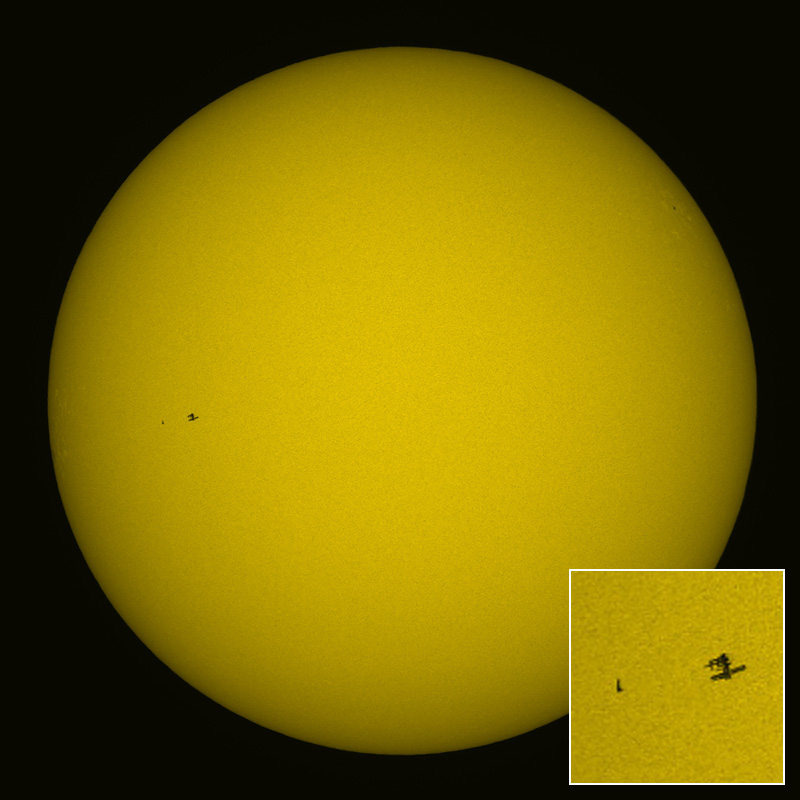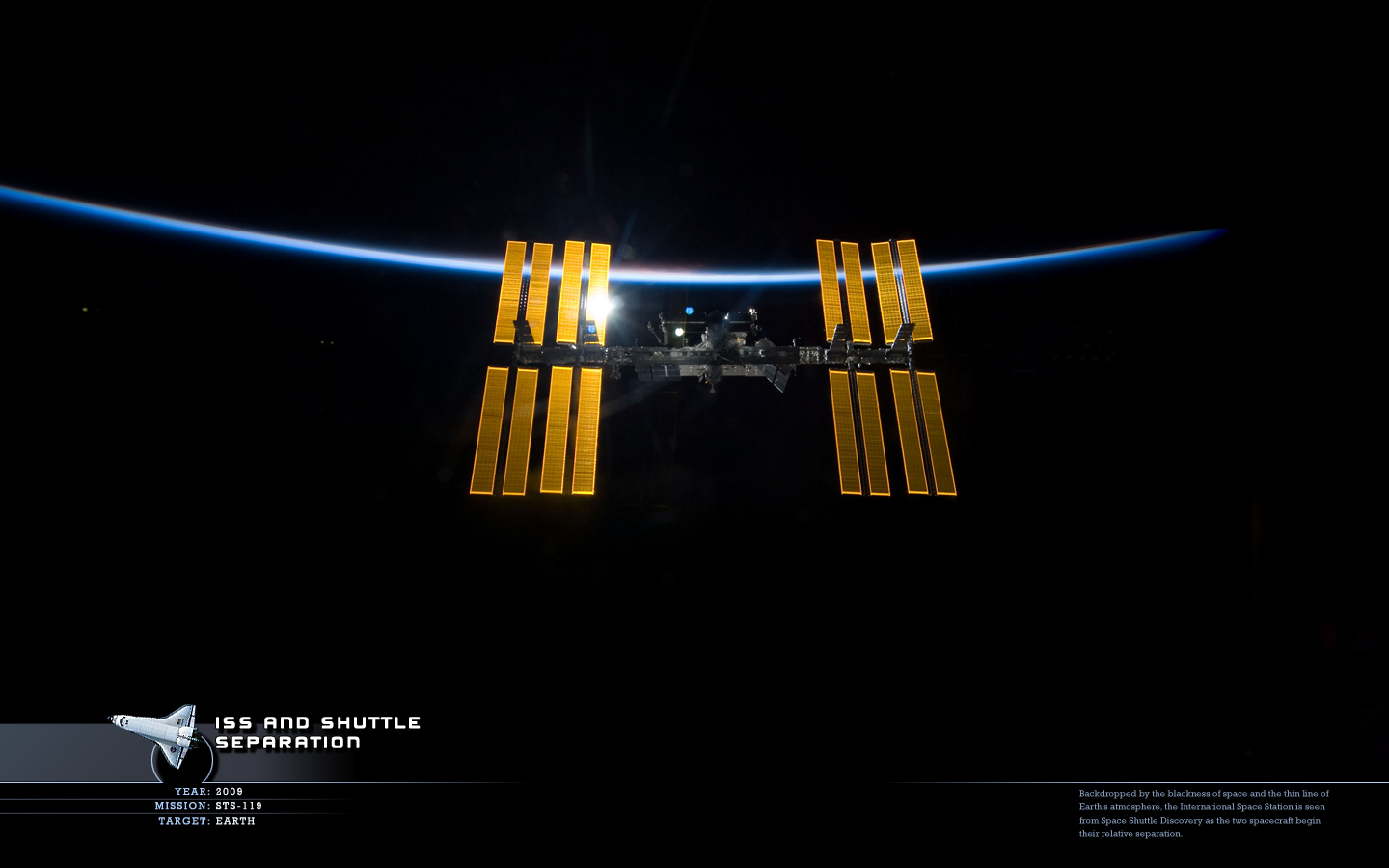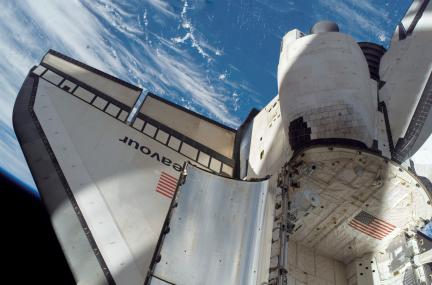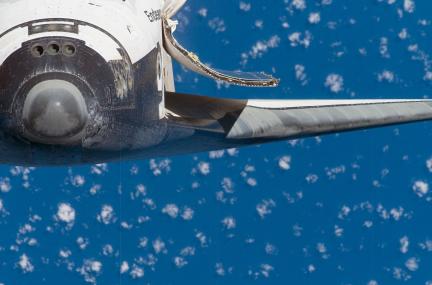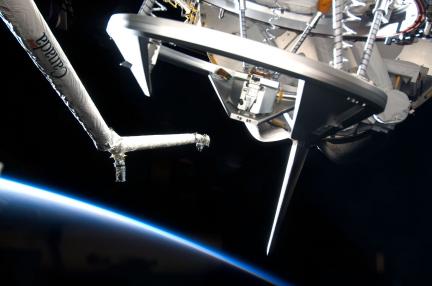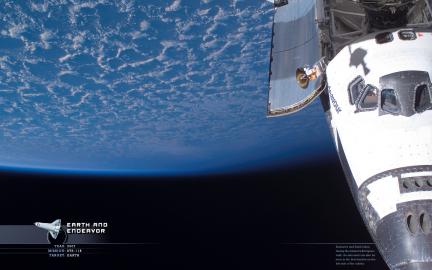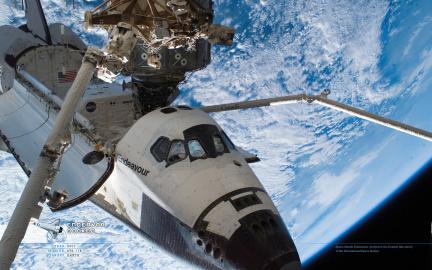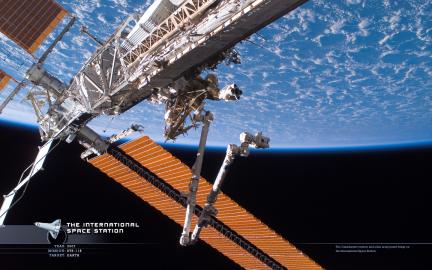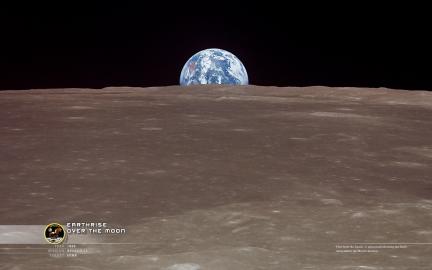 You can also follow the mission in real-time as history played out 40 years ago on twitter. Follow Mission Control, The Spacecraft or The Lunur Excursion Module (Eagle). The Eagle will not have much to say, obviously, until it is actually descending toward the surface of the moon on Monday, but it has just started making some noise on Sunday night.
You can also follow the mission in real-time as history played out 40 years ago on twitter. Follow Mission Control, The Spacecraft or The Lunur Excursion Module (Eagle). The Eagle will not have much to say, obviously, until it is actually descending toward the surface of the moon on Monday, but it has just started making some noise on Sunday night.
Apollo 11 Owners Manual
 If happen to come to own one of these bad boys from the late 60’s early 70’s you are going to need this owners manual. The original owners of these models rarely have this on-hand. If you are in the market, beware of any models from the 13 line since that model had a well-known faulty oxygen tank that is likely to scrub any potential trips to the Lunar surface you may have planned. Get it from Haynes online.
If happen to come to own one of these bad boys from the late 60’s early 70’s you are going to need this owners manual. The original owners of these models rarely have this on-hand. If you are in the market, beware of any models from the 13 line since that model had a well-known faulty oxygen tank that is likely to scrub any potential trips to the Lunar surface you may have planned. Get it from Haynes online.
ISS Looking Like its from the Battlestar Armada
Wow. Best Image of Hubble (The Telescope) Ever.
 Having successfully repaired/upgraded the Hubble Space Telescope in what was easily the most complicated in-space repair mission in history, the Shuttle and Hubble depart the company of one another.
Having successfully repaired/upgraded the Hubble Space Telescope in what was easily the most complicated in-space repair mission in history, the Shuttle and Hubble depart the company of one another.
Taken from NASA image caption: An STS-125 crew member aboard the Space Shuttle Atlantis captured this still image of the Hubble Space Telescope as the two spacecraft begin their relative separation on May 19, after having been linked together for the better part of a week. During the week five spacewalks were performed to complete the final servicing mission for the orbital observatory.
Shuttle and the Sun

 This image taken by Thierry Legault has been making the rounds lately. That bit of a speck seen on the Sun’s lower-right limb is the shuttle on the way to perform it’s current Hubble repair mission. The spacecraft itself can be seen in much greater detail at left and another image of The Shuttle with The Hubble Space Telescope nearby can also be seen on Thierry’s website here.
This image taken by Thierry Legault has been making the rounds lately. That bit of a speck seen on the Sun’s lower-right limb is the shuttle on the way to perform it’s current Hubble repair mission. The spacecraft itself can be seen in much greater detail at left and another image of The Shuttle with The Hubble Space Telescope nearby can also be seen on Thierry’s website here.
A quick google search of Thierry’s name reveals that he has been at this sort of thing before. Seen below is the Shuttle and The International Space Station as seen against The Sun in 2006. These transits happen in less than a second to a ground observer, so capturing this fleeting event is no easy task.
Time Lapse Imagery from ISS
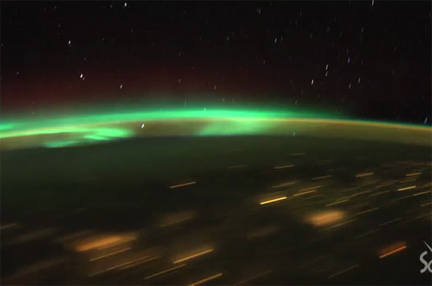 While astronaut Don Pettit was living aboard the International Space Station (ISS), he used some of his off-duty time to make time lapse videos of what he was seeing outside of the ISS window. There are a few examples of this work in this video from Science Friday (NPR). It begins with some beautiful aurora followed by a view of the solar panels rotating (they do this every 90 mins) and a simple look at the earth whirling about through a portal window.
While astronaut Don Pettit was living aboard the International Space Station (ISS), he used some of his off-duty time to make time lapse videos of what he was seeing outside of the ISS window. There are a few examples of this work in this video from Science Friday (NPR). It begins with some beautiful aurora followed by a view of the solar panels rotating (they do this every 90 mins) and a simple look at the earth whirling about through a portal window.
See also this experiment involving candy corns.
NASA Discovers Graphic Designer
Best Image of ISS Yet
STS-123: Main Arrays on ISS
Earth’s Atmosphere at the Edge of Space
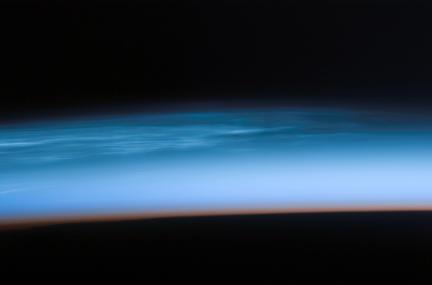
STS-123: As Seen From EVA
STS-123: Before Docking With ISS
STS-124: Arm & Crescent
This STS-82 Image is Not a Painting
Since I have been posting so many images from STS-118 recently, I started rummaging through the Space Shuttle archives at the NASA website. One image stood apart from the rest as completely unreal. Even as a thumbnail, I assumed it was “space art” or some kind of promotional image used on a poster and almost didn’t even click on it. However, this is not a composite, collage or painting. It is actually an image of astronaut Joseph R. Tanner from STS-82 taken back in 1997.
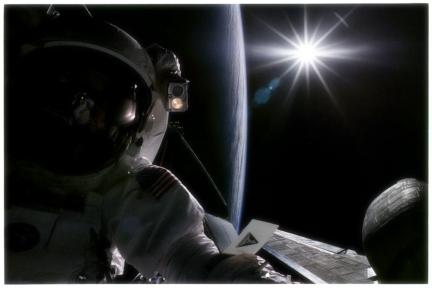
Take a look at what can be seen in here. It is like the entire Shuttle program in one snapshot. There is the obvious… the sunburst, crescent Earth, back end of the Shuttle Orbiter itself and of course the astronaut. Take a closer look and there is more at a glance… In Tanner’s visor is the reflection of the other spacewalker Gregory J. Harbaugh who took the image and attached to Tanner’s arm is the small checklist of tasks that astronauts use on such difficult tasks such as spacewalks.
The original exposure was quite grainy and lots of color noise due to the low-light conditions. So it was cleaned up a bit color-wise and a duplicate of the image itself has been blurred and screened over the other. This gives the image a sort of “romantic” glow but more importantly helps reduce the noise while maintaining the image’s overall details.
On a note of interest, STS-82 also happens to be one of the Hubble Space Telescope repair missions which extended the life of that most valuable scientific program.
More STS-118
One of the best details of this one is that you can see an astronaut intentionally peeking out of the second window on the left. Seeing a person looking out the window reminds us how real it is. It’s like seeing a friend in a car go by… only our friend’s car is floating in the hostile vacuum of space.
Another STS-118 Image
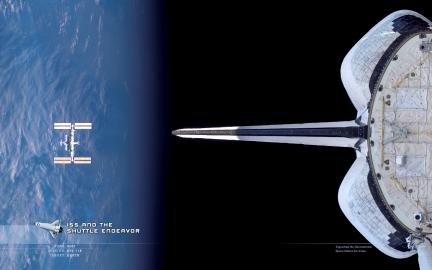 While looking for stunning images from STS-119, came up with this missed gem from 118. Again… was there a photographer on that mission?
While looking for stunning images from STS-119, came up with this missed gem from 118. Again… was there a photographer on that mission?
In the Shadow of the Moon Trailer
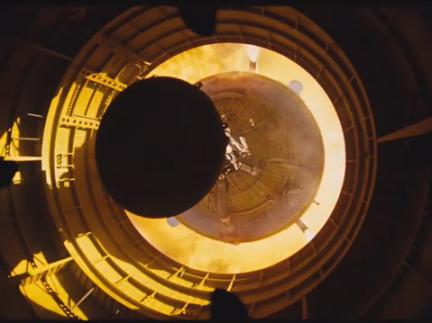 The Ron Howard documentary “In the Shadow of the Moon”, came to theaters on September 7th. How did I miss this? See the trailer here.
The Ron Howard documentary “In the Shadow of the Moon”, came to theaters on September 7th. How did I miss this? See the trailer here.
Wallpapers: Earth from the Space Shuttle
Something impressive seems to be happening on STS-118 (the Space Shuttle mission currently in orbit)… Photography.
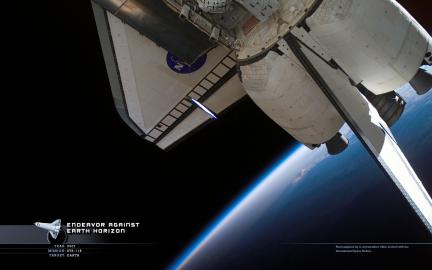
Surely there are many excellent images to be had from previous Shuttle missions, but the images coming from STS-118 are really something to see. Perhaps one of the astronauts doing the EVAs (extra vehicular activities) has a degree in photography? At any rate, this site’s recent effort to give Earth it’s fair presence on this site has to take advantage of some of these fantastic images coming from NASA.
If you would like to see more check out the current mission’s multimedia gallery here or digg the story here.
Wallpaper: Earth Portrait
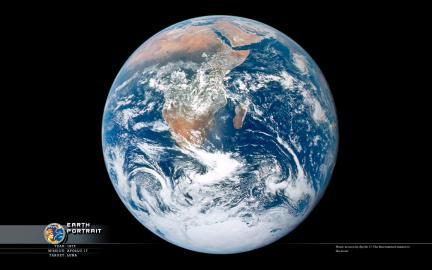 You have probably seen this image of the Earth before. This was the way the Earth appeared to the final astronauts to land on the moon in 1972. It has since become the quintessential Earth portrait, used more often than any other global image of the Earth. This is probably due to its beauty but also worth mentioning the relative rarity with which we get to see a full globe image taken of the Earth in one snapshot. Only missions and probes that leave the vicinity of the Earth are able to do this and some other popular Earth portraits have been taken by Galileo, Messenger… there is the famous Earth/Moon portrait taken by Voyager 1 and of course several from various Apollo missions.
You have probably seen this image of the Earth before. This was the way the Earth appeared to the final astronauts to land on the moon in 1972. It has since become the quintessential Earth portrait, used more often than any other global image of the Earth. This is probably due to its beauty but also worth mentioning the relative rarity with which we get to see a full globe image taken of the Earth in one snapshot. Only missions and probes that leave the vicinity of the Earth are able to do this and some other popular Earth portraits have been taken by Galileo, Messenger… there is the famous Earth/Moon portrait taken by Voyager 1 and of course several from various Apollo missions.

